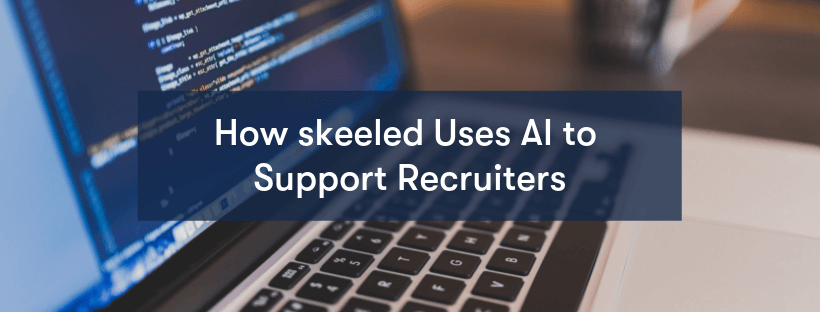Nowadays, we assist to more and more companies adopting Artificial Intelligence (AI) in their processes, both because their top managers are thrilled by the promises of the AI revolution and because they fear to lose competitive advantage if they do not make the AI investment.
This is no different in the recruitment industry, where new trends are being settled and researched by high-tech companies in areas such as automatic matching, talent sourcing, profile augmentation, intelligent job posting and programmatic advertising, among others.
So, does this mean that recruiters will be eventually replaced by error-free, highly efficient and powerful AI machines? Hardly. First of all, AI - the design of intelligent machines that emulate the human thinking and behavior - is still in its infancy, even though the huge steps already done in fields such as planning, speech, vision, language processing, emotional reasoning, creativity, and autonomous agents.
Secondly, AI shows its best within a human-in-the-loop paradigma. On the one hand, the computational power of current machines coupled with the high level of sophistication of today’s AI algorithms allow to automate tasks that otherwise would be time intensive or even impossible to humans. On the other hand, most of the recruitment tasks that require social skills, benevolence engagement, and creativity, for instance, are by far much better done by humans. As put by Stefan Scheller in “Recruitment & HR Trends for 2019 by the Experts” article, “the use of algorithms and AI in recruiting shouldn't be and end in itself, but has to benefit each and every human in the recruitment process”.
The skeeled Matching Algorithm
At skeeled, we take steady steps towards this benefic synergie between recruitment professionals and AI based functionalities. Skeeled is an all-in-one software that streamlines the companies’ hiring process, including profile screening, personality evaluation, video interviews and candidate matching and ranking.
Skeeled first AI-based tool was the matching algorithm, a machine learning classifier that takes as input specific data about an applicant and a job and that predicts a categorical score describing how well this applicant fits to this job. By automating the repetitive task of matching, recruiters have more time to analyze the most promising profiles and to engage with applicants.
The matching algorithm is trained with real data about applicants that applied to different jobs in the past and whose fitness to these jobs were manually classified by human resource experts. By looking at these data, the predictive model underneath the algorithm uses statistical inference to learn these experts’ decisions about the matching of applicants and jobs.
Therefore, skeeled put a lot of care and attention in the design of the training dataset, which currently has tens of thousands of observations relative to applicants that applied to different jobs, covering more than 50 different industries and 200 different types of jobs, in several different countries.
Additionally, each feature (field) of this dataset is carefully designed and reviewed in a continuous joint effort between skeeled data scientists, psychologists, human resources and customer support experts, using the knowledge gathered over the years by these skeeled professionals and the insights gained using techniques from data analysis and data visualization.
Currently, the matching algorithm uses dozens of features extracted from different parts of the recruiting process. A short set of examples follows:
- Minimum required experience and fields of study, extracted from the job posting;
- Past experience domains, education degrees, and language levels, from the applicant’s profile;
- Personality assessment of the applicant;
- Information generated from the implicit and explicit actions of recruiters, such as star classification of applicants, insertion of comments, requalification of applicants, and interviewing and hiring actions;
- Insights gathered from recruitment taxonomies, such as skills and knowledge associated to general occupations.
Some of these features are derived from open text form fields in possibly five different languages (english, french, dutch, german, and luxembourgish), which requires the use of language models from natural language processing (NLP), a branch of Artificial Intelligence aiming at providing machines with a human-level understanding of human languages.
New AI-based Tools
Currently, skeeled is developing new AI-based tools to include in future versions of the software. One example is the contradictions and ambiguities system, a research project being developed in collaboration with the University of Porto that uses NLP and deep learning to detect contradictions and ambiguities in job descriptions, allowing the recruiter to take action before the job is published.
Another tool being prototyped is the job title advisor, which analyses job titles in job descriptions before they are published, detecting “problematic” titles and suggesting alternatives, based on skeeled recruiting taxonomy.
The final example is a machine learning-based tool that allows the recruiter to evaluate the match of applicants that have already applied to other jobs in phase of a new position opening, allowing recruiters to better explore their data assets and to save time and human resources.

Skeeled offers you the perfect opportunity to bring innovation and digitalisation to your hiring. Check our website or our LinkedIn, Twitter and Facebook pages for further information.
Thanks for reading and see you next time!
Your team here at skeeled




